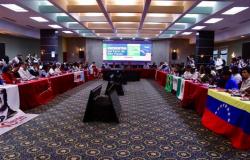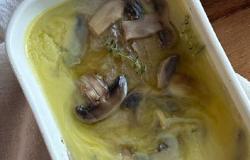The port of Havana dawned this Wednesday, June 12, with the arrival of a caravan of Russian Navy ships. The image has raised suspicions for many amid tensions between Washington and the Kremlin and after Joe Biden authorized Ukraine to use American weapons in attacks inside Russia. However, the Government of Cuba has assured that the ships do not have nuclear weapons on board and that they do not represent a threat to the region. The United States has also monitored the maneuvers and confirms that it is nothing more than a routine activity.
This is the frigate Gorshkov, one of the most modern ships in the Navy; in addition to the nuclear powered submarine Kazan, with the capacity to fire missiles with a range of up to 2,500 kilometers; fleet tanker Pashin and the rescue tug Nikolai Chiker. Despite what happened in 1962 during the so-called missile crisis, when Cuba, just 90 miles from Florida and as an ally of the former Soviet Union, received nuclear missiles amid the tensions of the Cold War, the Government of La Havana insists that the visit “corresponds with the historical friendly relations between Cuba and the Russian Federation,” according to an official statement from the Cuban Ministry of Foreign Affairs. The arrival of the ships also occurs at a time of unprecedented economic crisis on the Island, which depends on oil supplies arriving from Russia. “The visits of naval units from other countries constitute a historical practice of the revolutionary government with nations that maintain relations of friendship and collaboration,” says the statement, which also clarifies that said visit “strictly adheres to the international regulations of which Cuba is a member.” State Party”.
At the time of arrival, 21 salutes were fired in the Cuban capital by one of the ships, while the Revolutionary Armed Forces responded with cannon shots from the San Carlos de La Cabaña Fortress, a display that caught the attention of the fishermen from the boardwalk and the Cubans passing through that area of Havana.
Until June 17, the ships will remain in Cuban waters, and starting Thursday, for four hours a day, “the general public” will be able to visit the frigate. Gorshkov, a Russian diplomat told CNN. The Cuban Government reported that during their stay the Russian sailors will carry out a program of activities that includes courtesy visits to the Chief of the Revolutionary War Navy and the Governor of Havana, and will visit places of historical and cultural interest.
Before arriving in Havana, the Russian ships carried out exercises and maneuvers in the Atlantic. These are not the first naval maneuvers involving Cuba and Russia. In July the Russian Navy training ship Perekop He spent several days in Havana. The frigate Admiral Gorshkov was in 2019.
As stated to the media The Moscow Times Emanuel Pietrobon, an analyst specialized in Latin America and the post-Soviet space, Cuba is “Russia’s most important partner in the Western Hemisphere from a purely geopolitical and geostrategic point of view” and “the meaning of this naval presence does not essentially differ from the past: “Russia wants to demonstrate that its navy is capable of crossing the oceans and reaching the coasts of Florida.”
The United States, for its part, has maintained close surveillance of Russian ships and their passage through the Atlantic and the Caribbean. The State Department said the exercises are part of a buildup to more Russian naval and air force exercises in the Caribbean over the summer, ahead of a larger global naval exercise in the fall.
At the end of May, Biden authorized the use of American weapons by Ukraine. Russian President Vladimir Putin told reporters during the annual International Economic Forum in St. Petersburg that “if someone thinks that it is possible to supply such weapons to a war zone to attack our territory and create problems for us, why don’t we have the right to supply our weapons?” Many Cuban social media users have expressed concern about the presence of the ships.
As part of strengthening relations between both countries, this week the Cuban Foreign Minister, Bruno Rodríguez Parrila, arrived in Moscow, who met with his Russian counterpart, Sergei Lavrov, who called him “friend” and declared in a conference press that they were “on the path of strengthening our political dialogue and we worked on impulses to stimulate the Cuban economy.” In May, the Cuban leader, Miguel Díaz-Canel, also visited Russia after the re-election of President Putin.
Follow all the information from El PAÍS América in Facebook and xor in our weekly newsletter.






